house with things behind
2018
Heidelberger Kunstverein, Heidelberg
[photo] andrea rossetti
[photo] studioflavien
Heidelberger Kunstverein, Heidelberg
[photo] andrea rossetti
[photo] studioflavien
The house with things behind includes a storage space behind the light blue facade. In the book laying on the shelf accompanying the work short story house, I wrote only one short story︎ in which, the friends Alexis and Baku live in front and behind the house respectively: one is concerned with maintaining the facade and the outdoor area —revelling in the blue sky and the sun – whilst the other spends his time sorting out and lending form to the things in the storage area and behind the house. Both are occupied with the upkeep of the house, which gives each of them a particular function, and divides their movement radius between ‘in front’ and ‘behind’. They interact with the house and are simultaneously actors in the production of the space of the house.
The outcome for the person who lives in the front of the edifice is that he or she ends up dealing with a pile that takes up space similarly to the way one has to accommodate with his or her subconscious self. There, there is not much to negotiate, but the making and the arranging of an interstice big enough for one to breathe, and have a life.
Two motions led the way things took shape in and around this house: piling and rolling. If the first gesture characterizes the hypothetical presence of the person from the back, the second became the formal motto for many arrangements of the inhabitant of the front. The bed, the towels, the tent/comforter/jacket, the plastic foil on the floor (floor dispenser) are rolled and rolled out.
The house was standing in the Heidelberger Kunsverein︎ for the time of an exhibition.
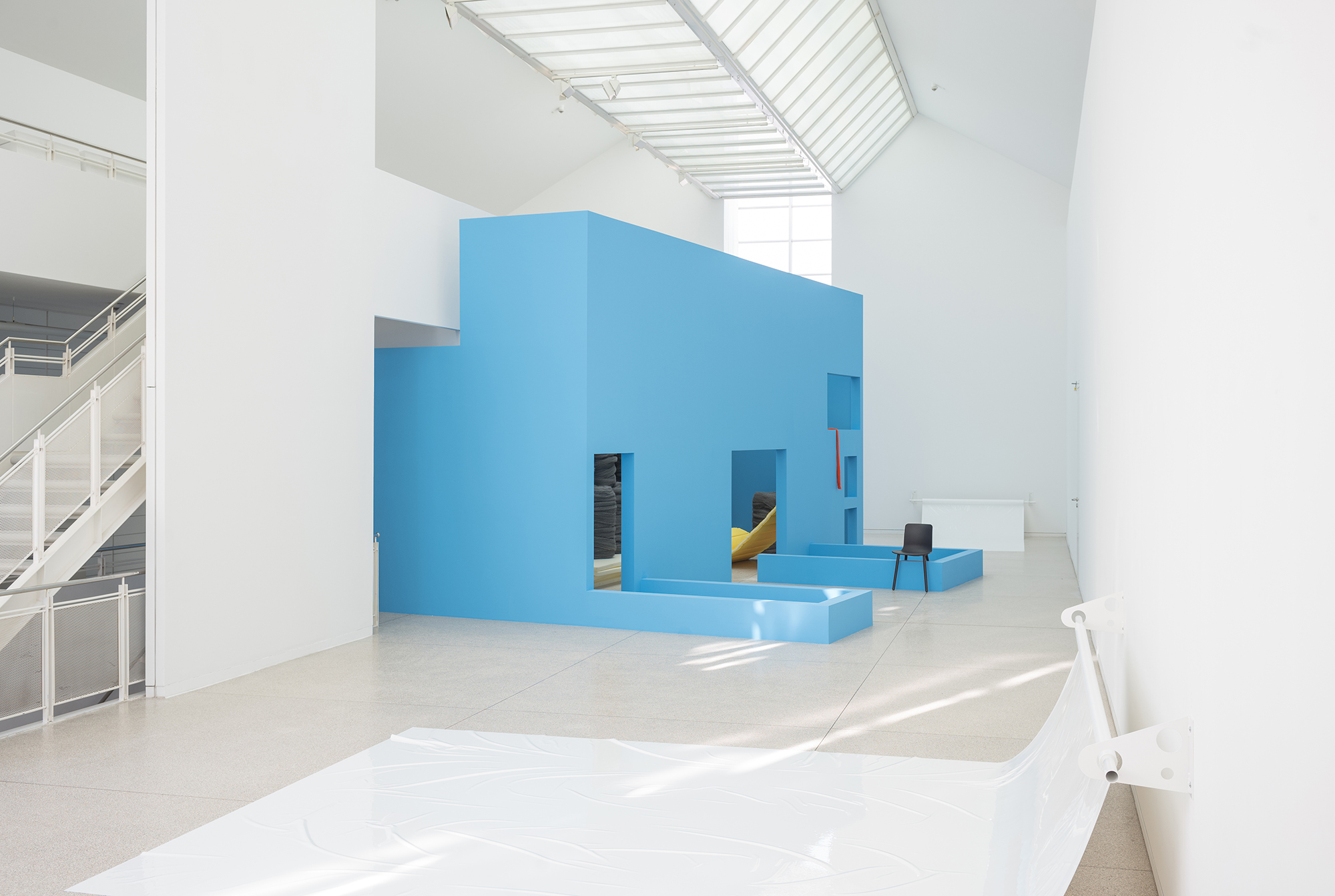




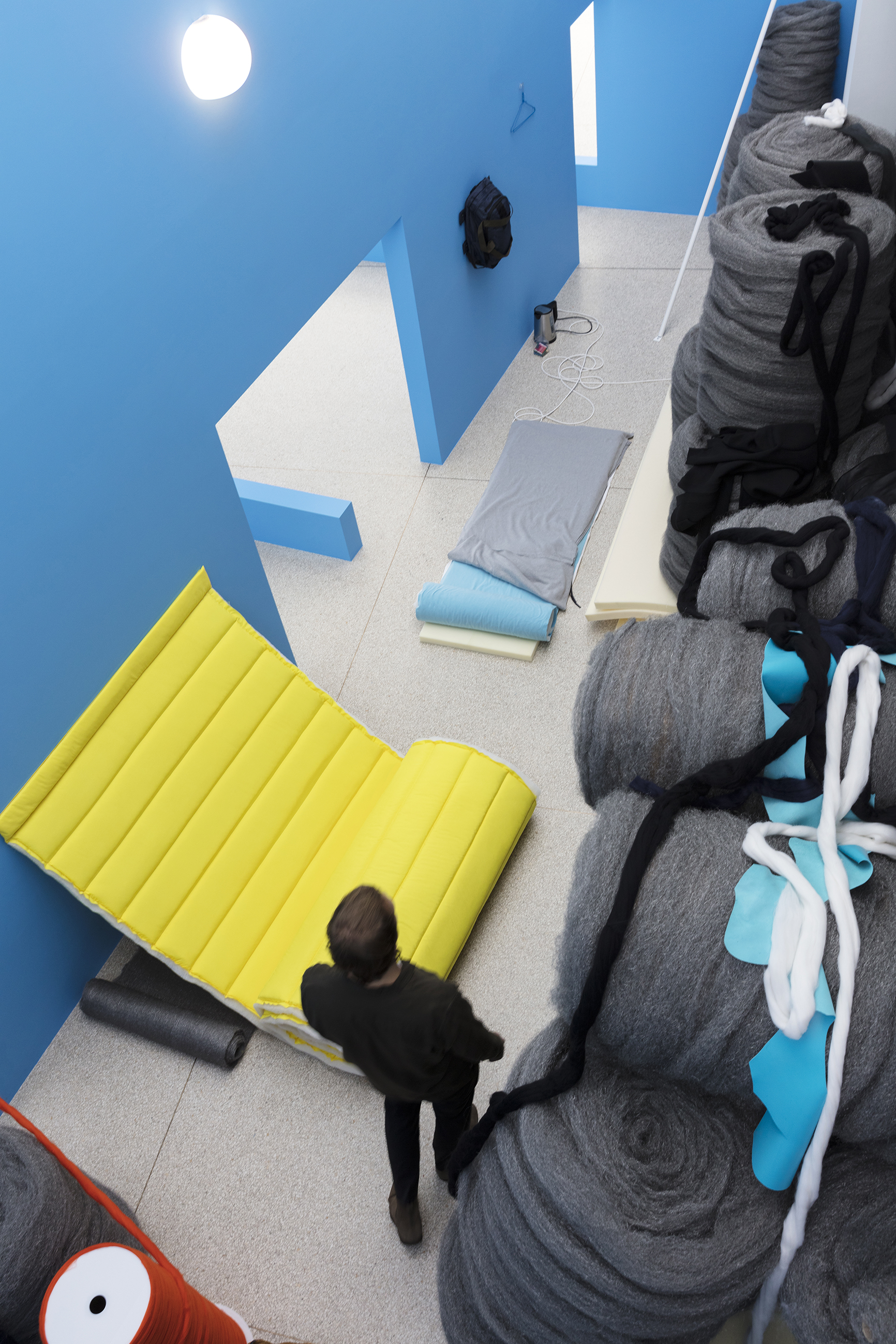


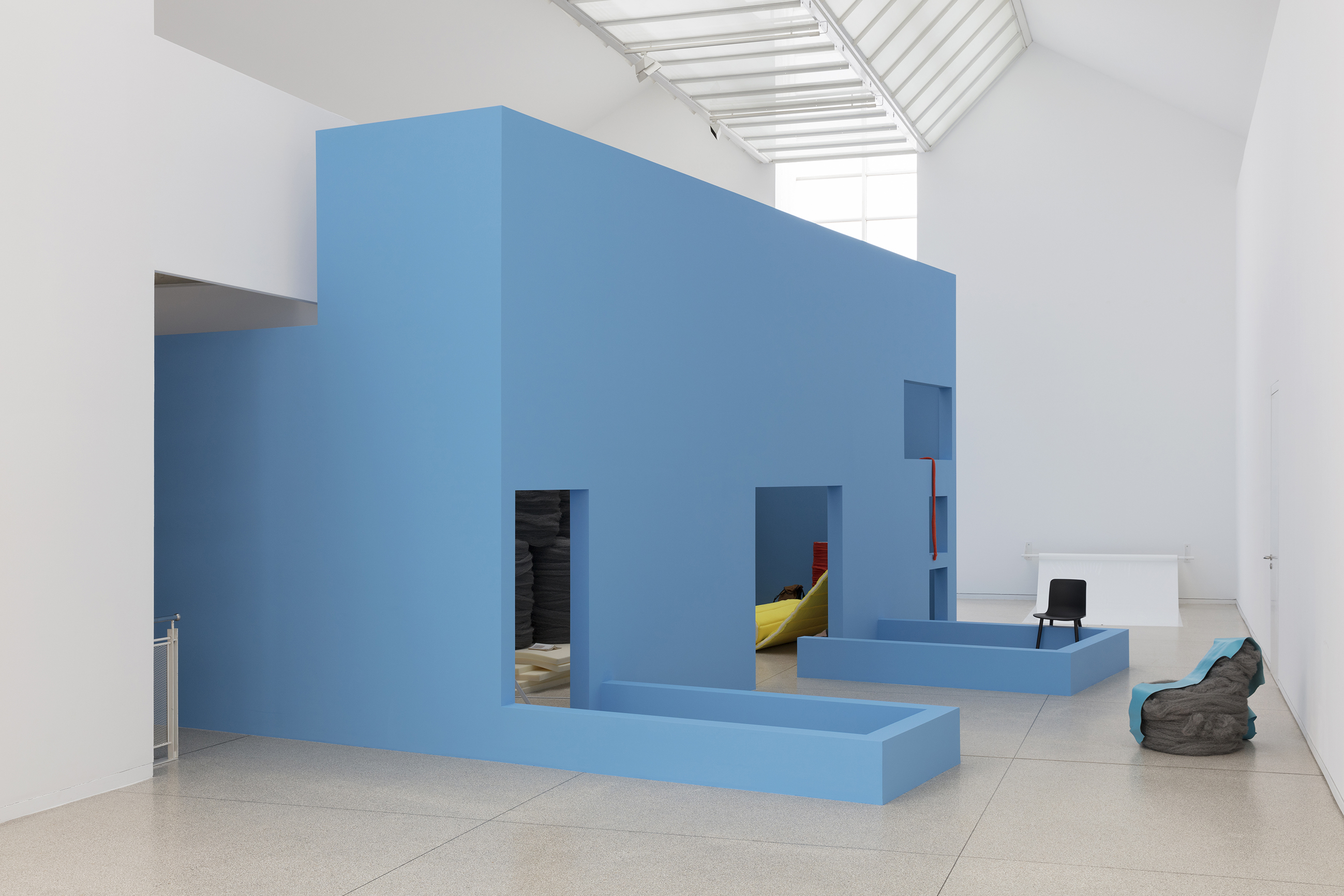
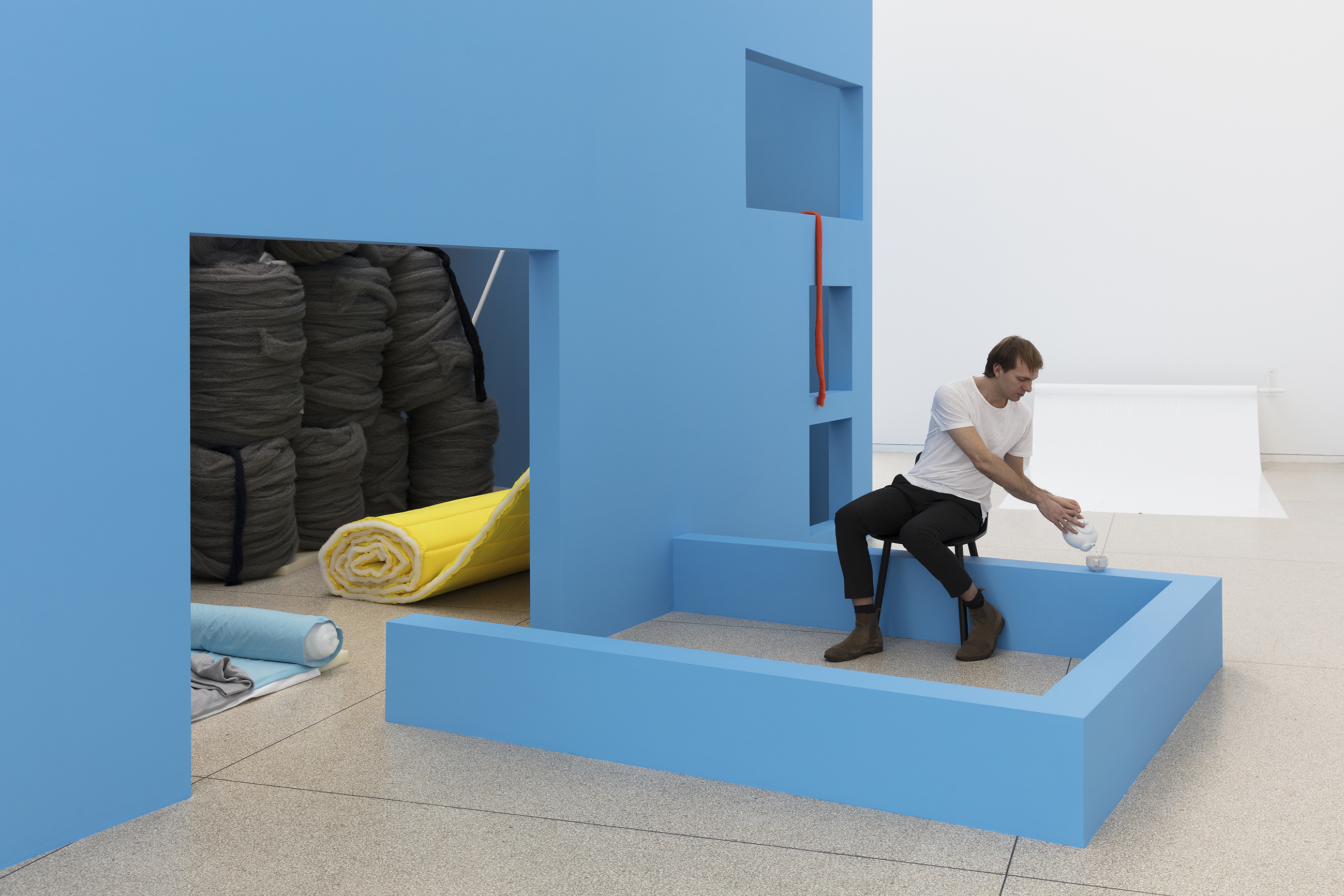
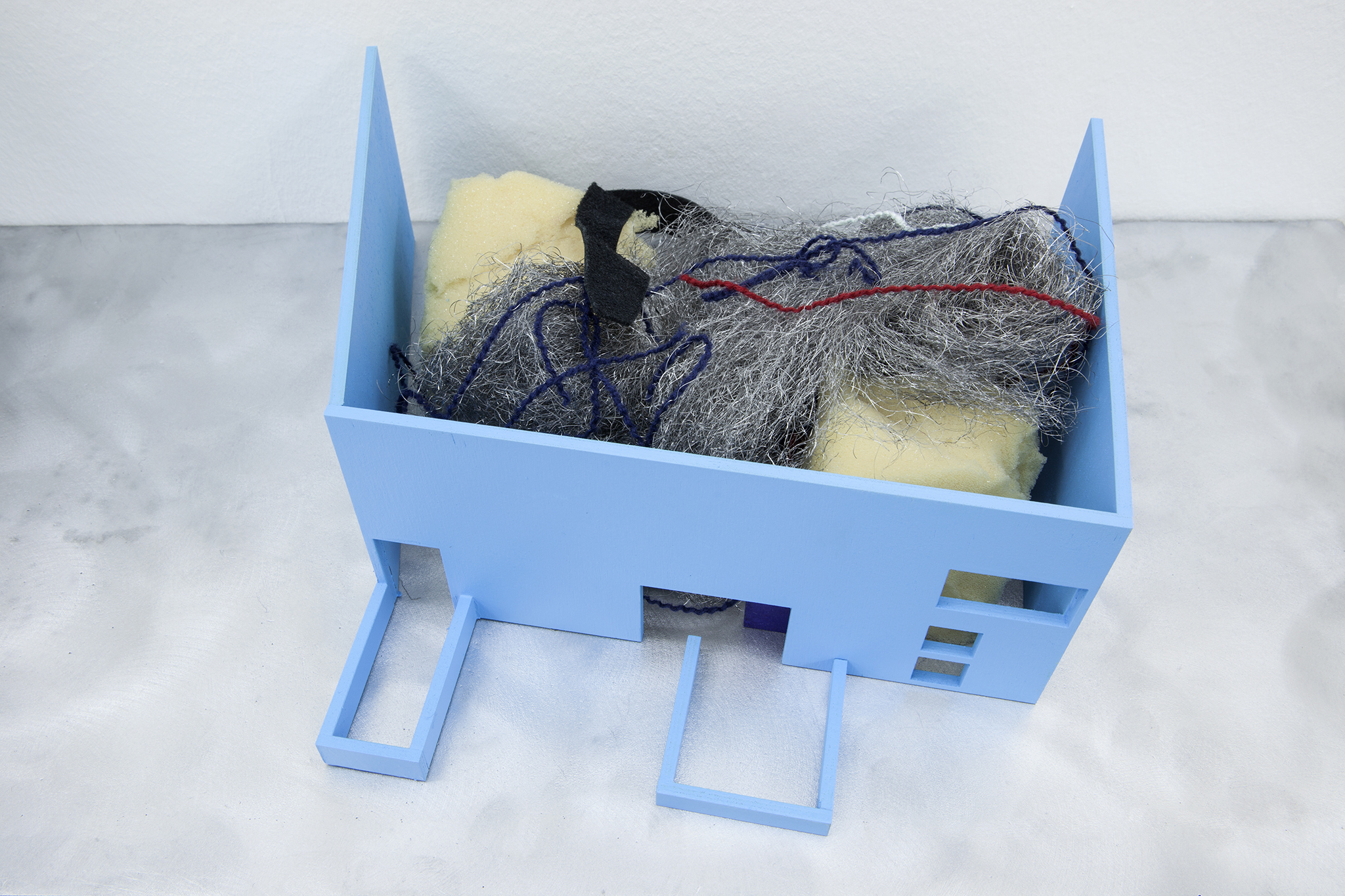
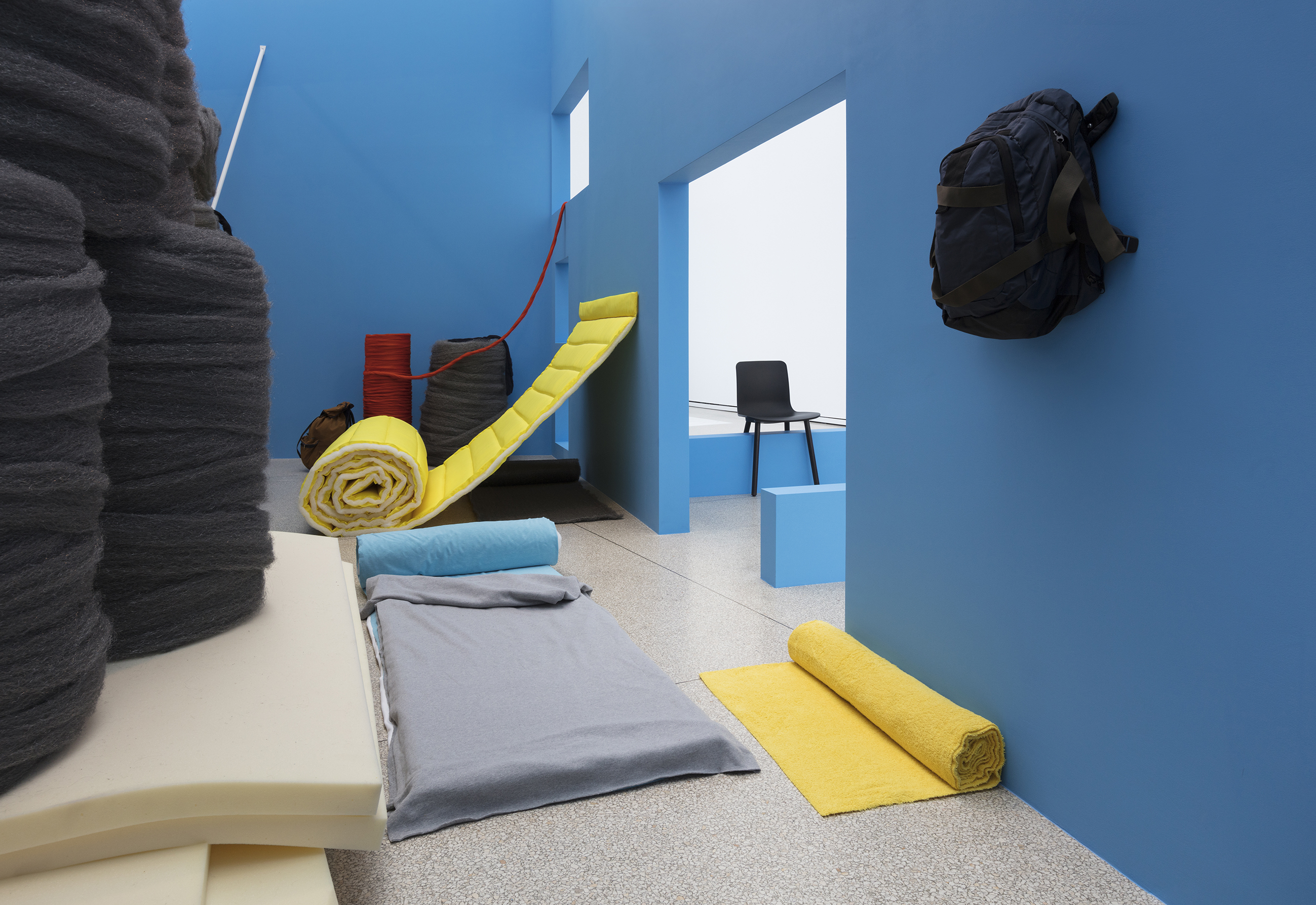


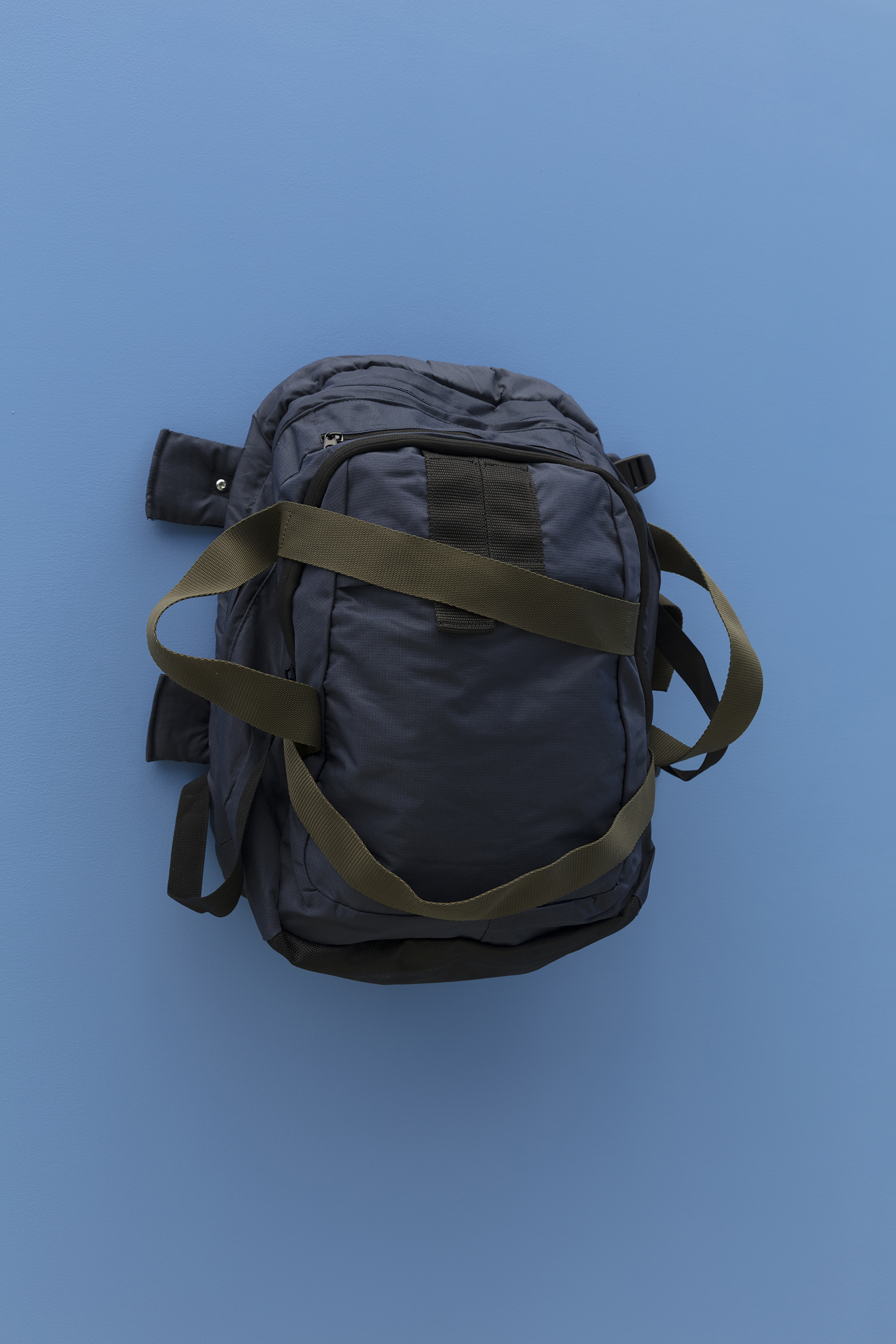
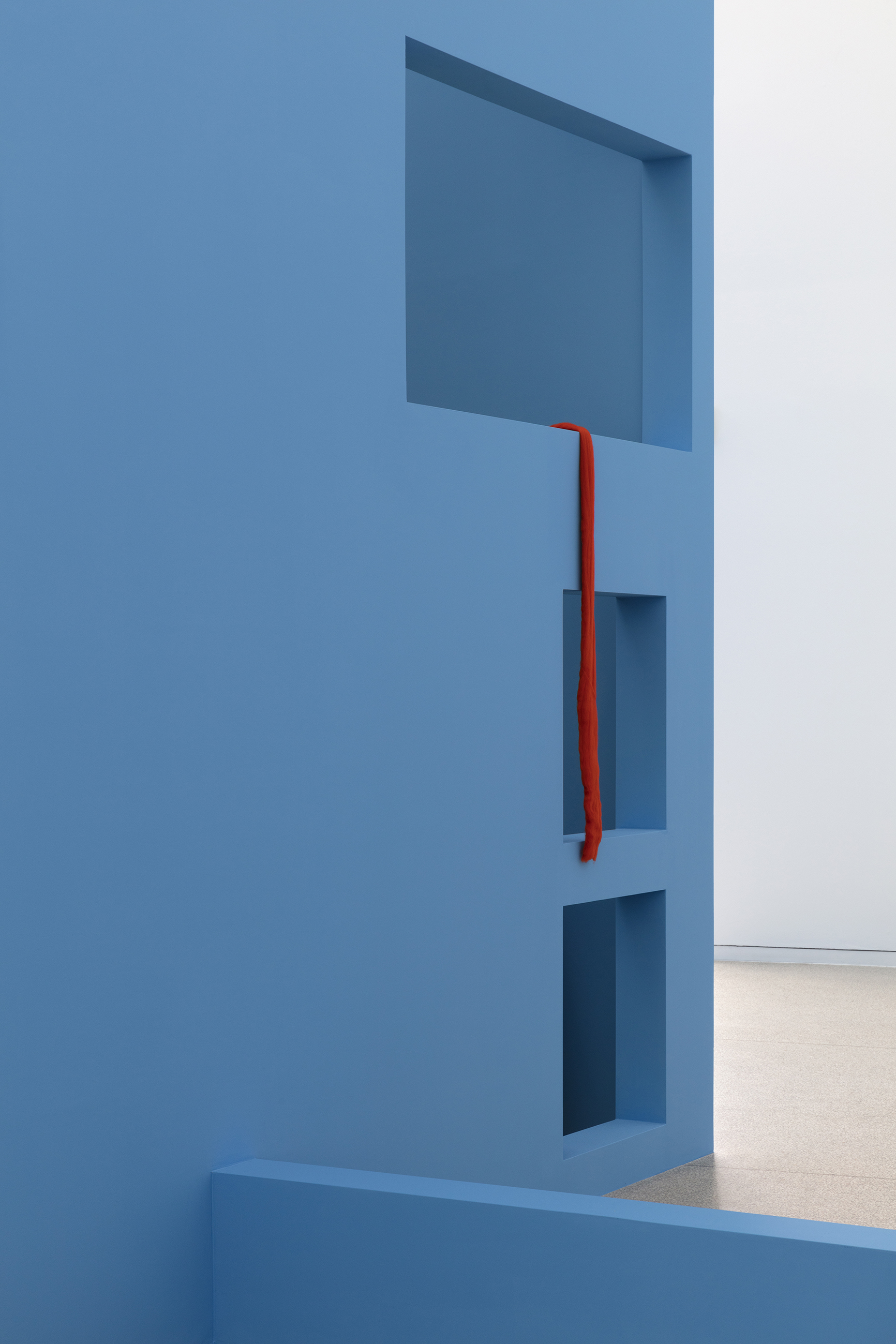
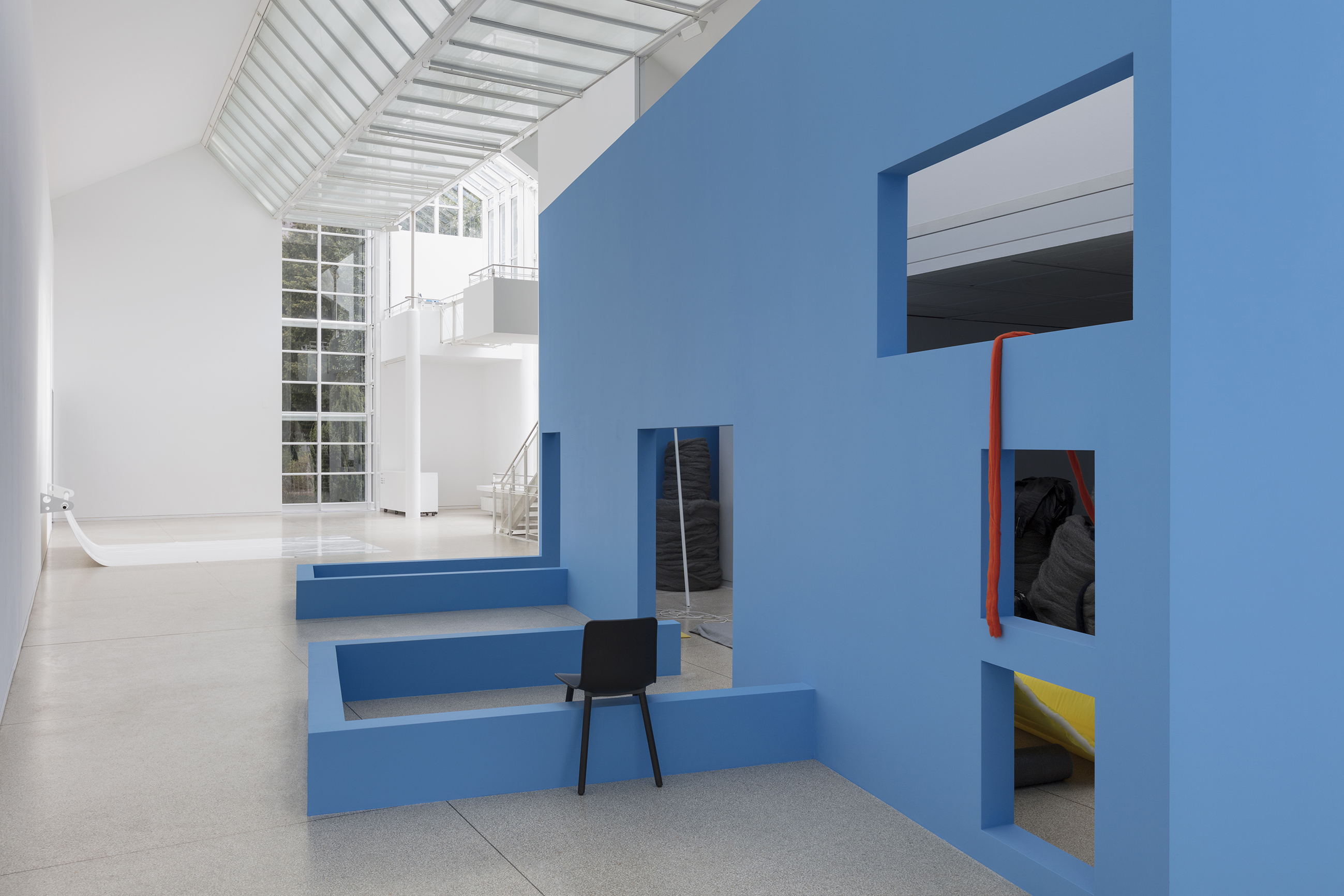

inhabitant Felix
2018
Felix Utting is the inhabitant of the house with things behind. If in the eponymous short story︎ he were to be one of the two protagonists of the space —Baku or Alexi— he would be the second one whose sector has been assigned to the facade. Felix is very tall; conversely the doorframes are uncommonly low. He lived a week inside the space and met the visitors daily, slept in different places of the house, read, rearranged some of the elements to his convenience. At the term of his stay, he met a larger public. He prepared tea for the guests and introduced the house to his hosts, describing the house and what had become his routines in the space.


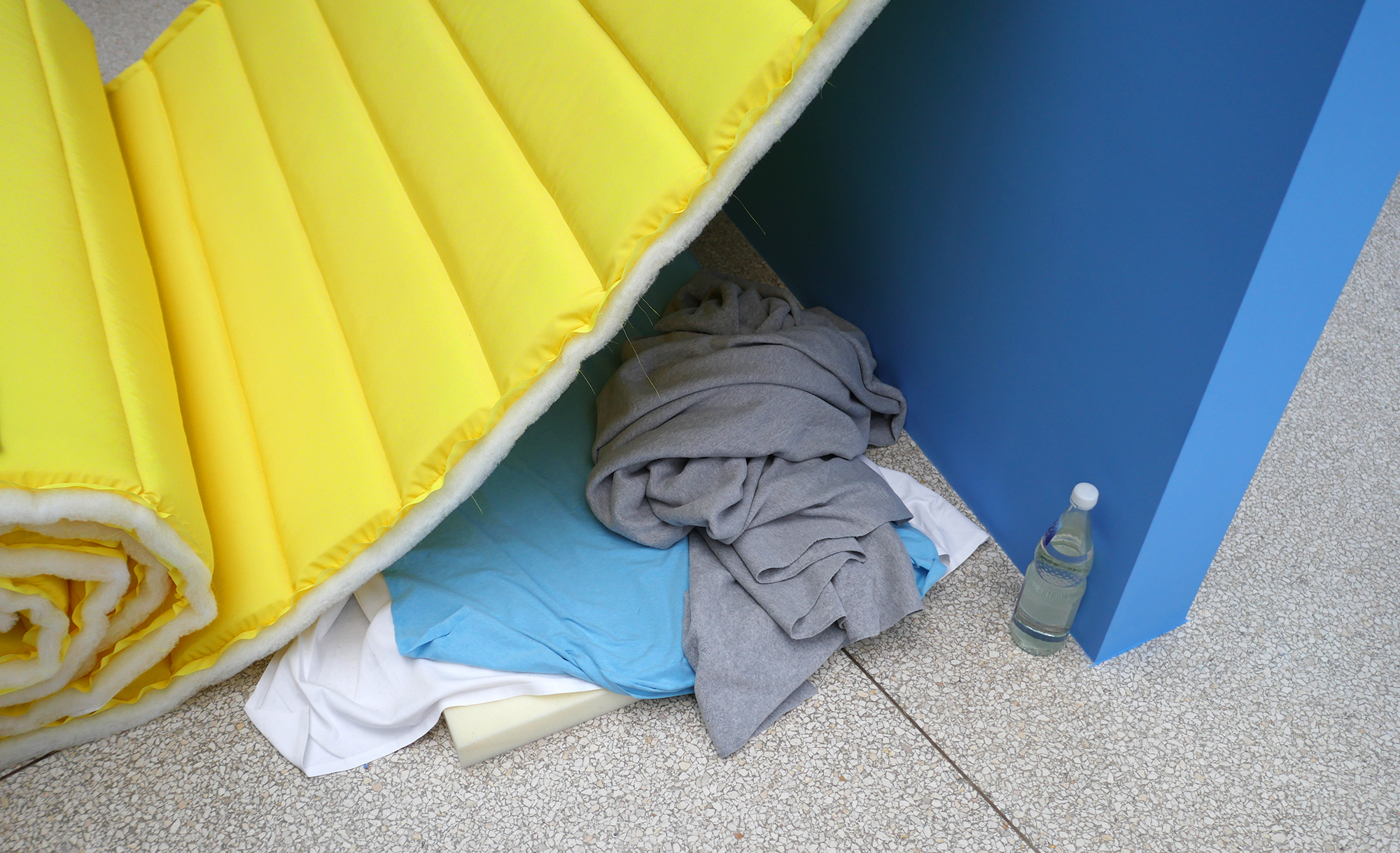
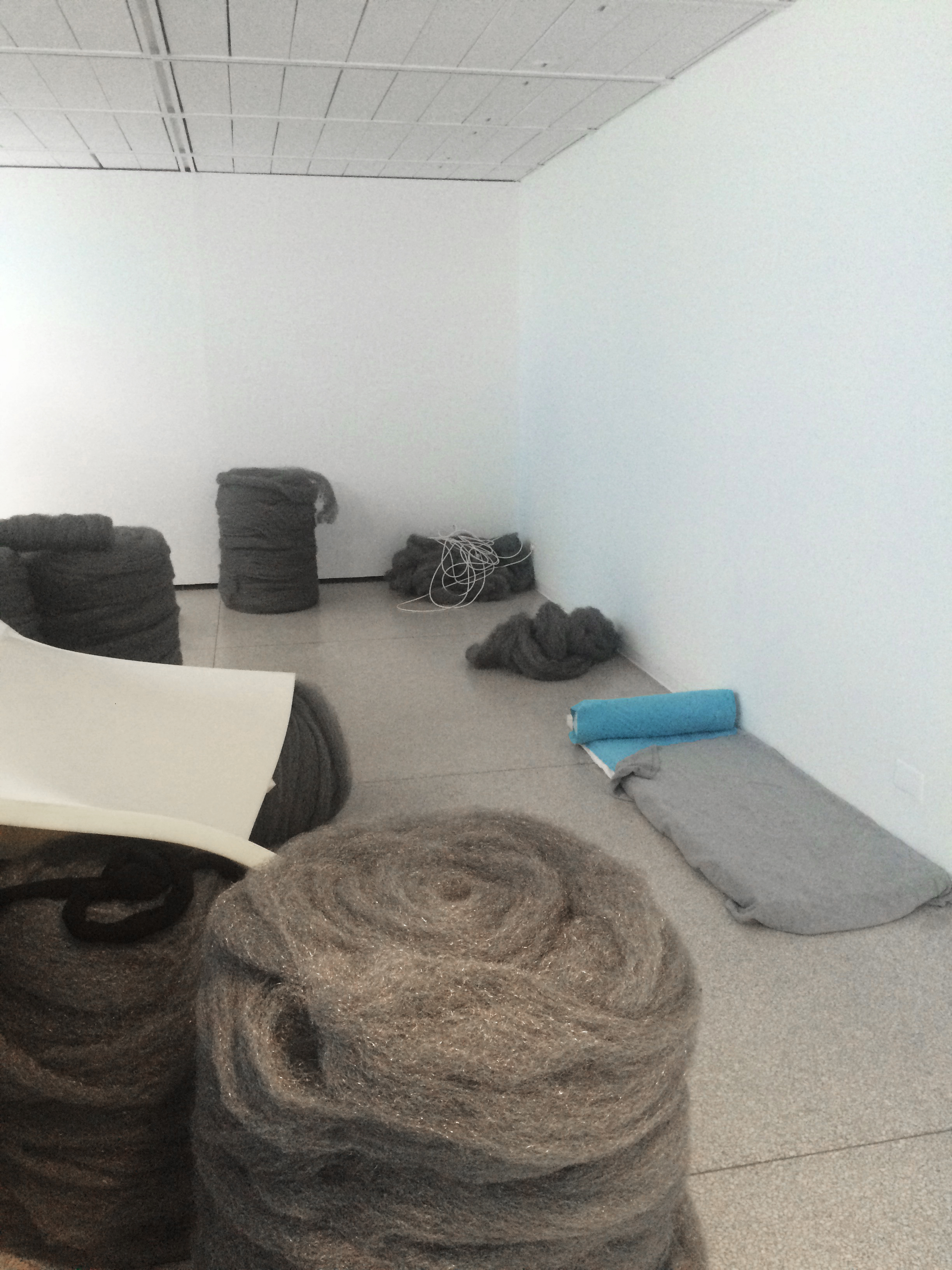
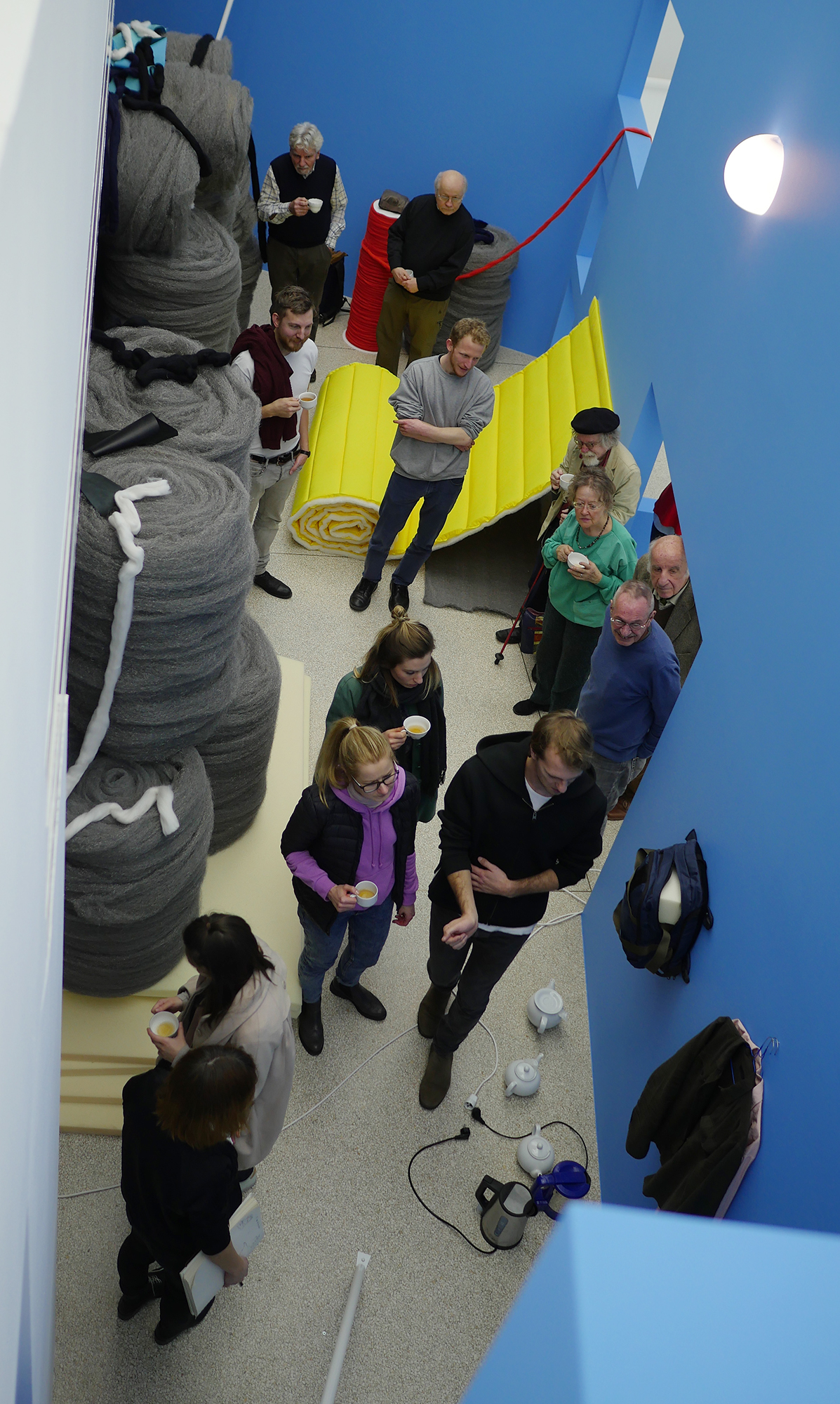

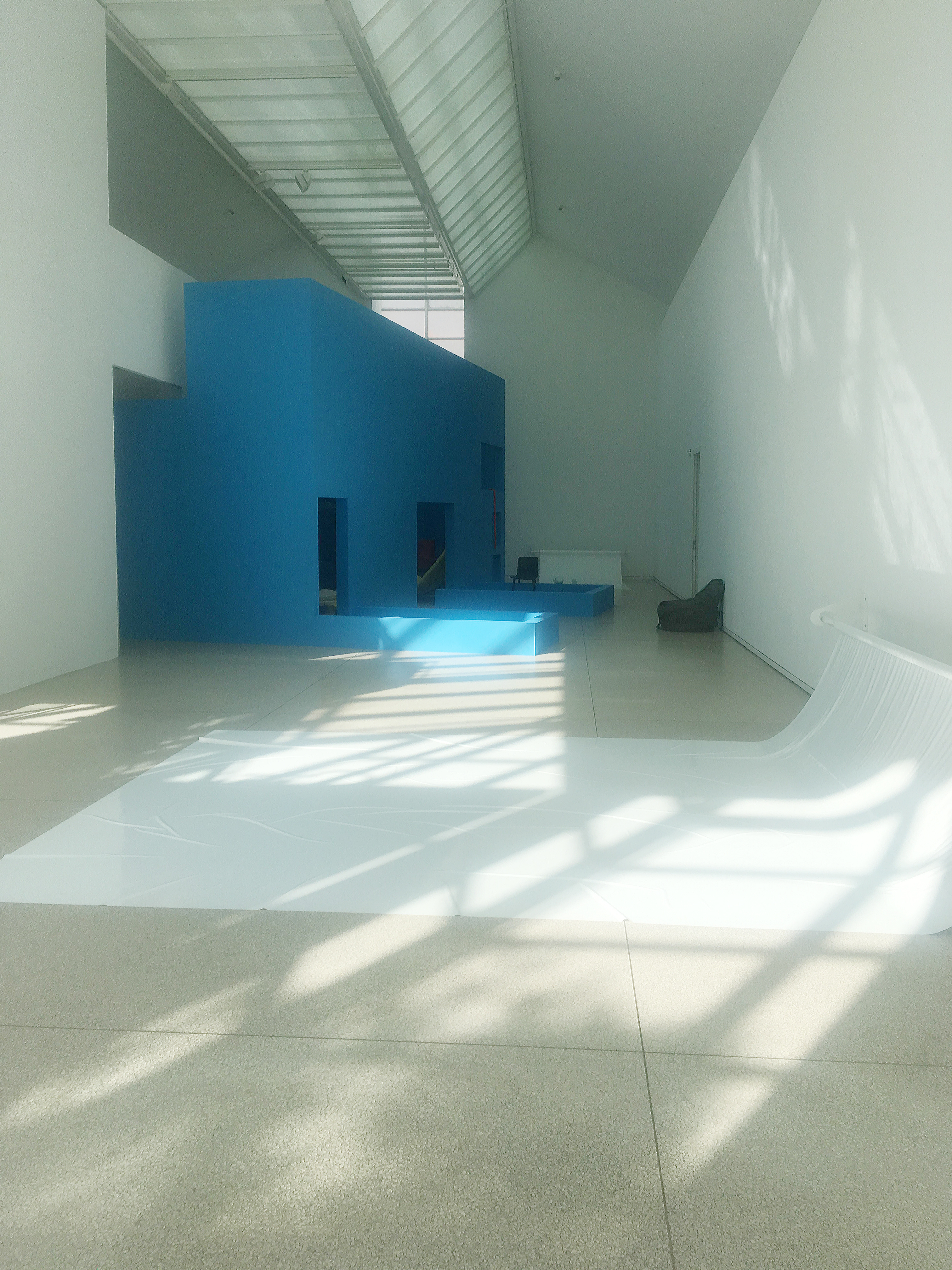


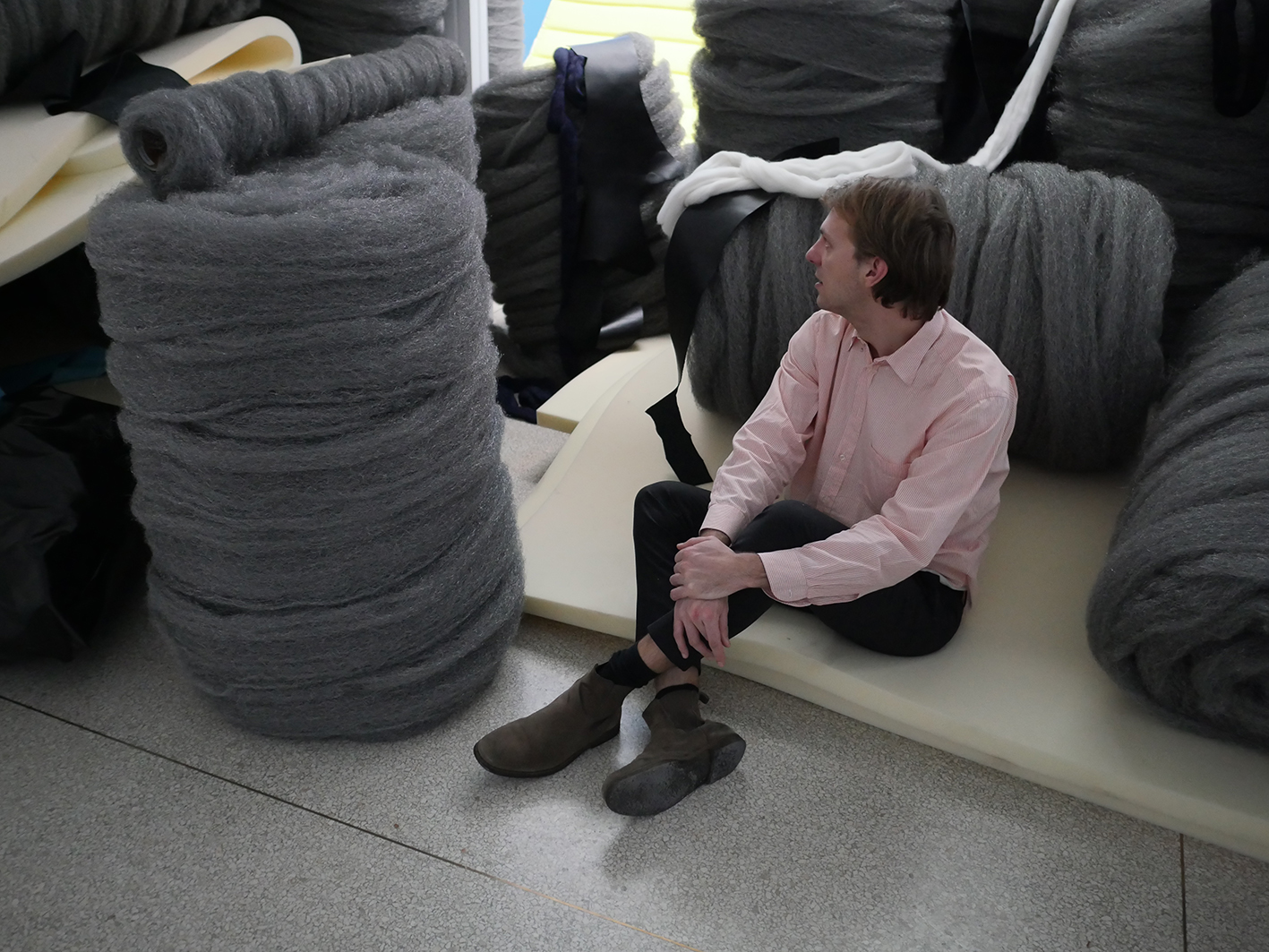
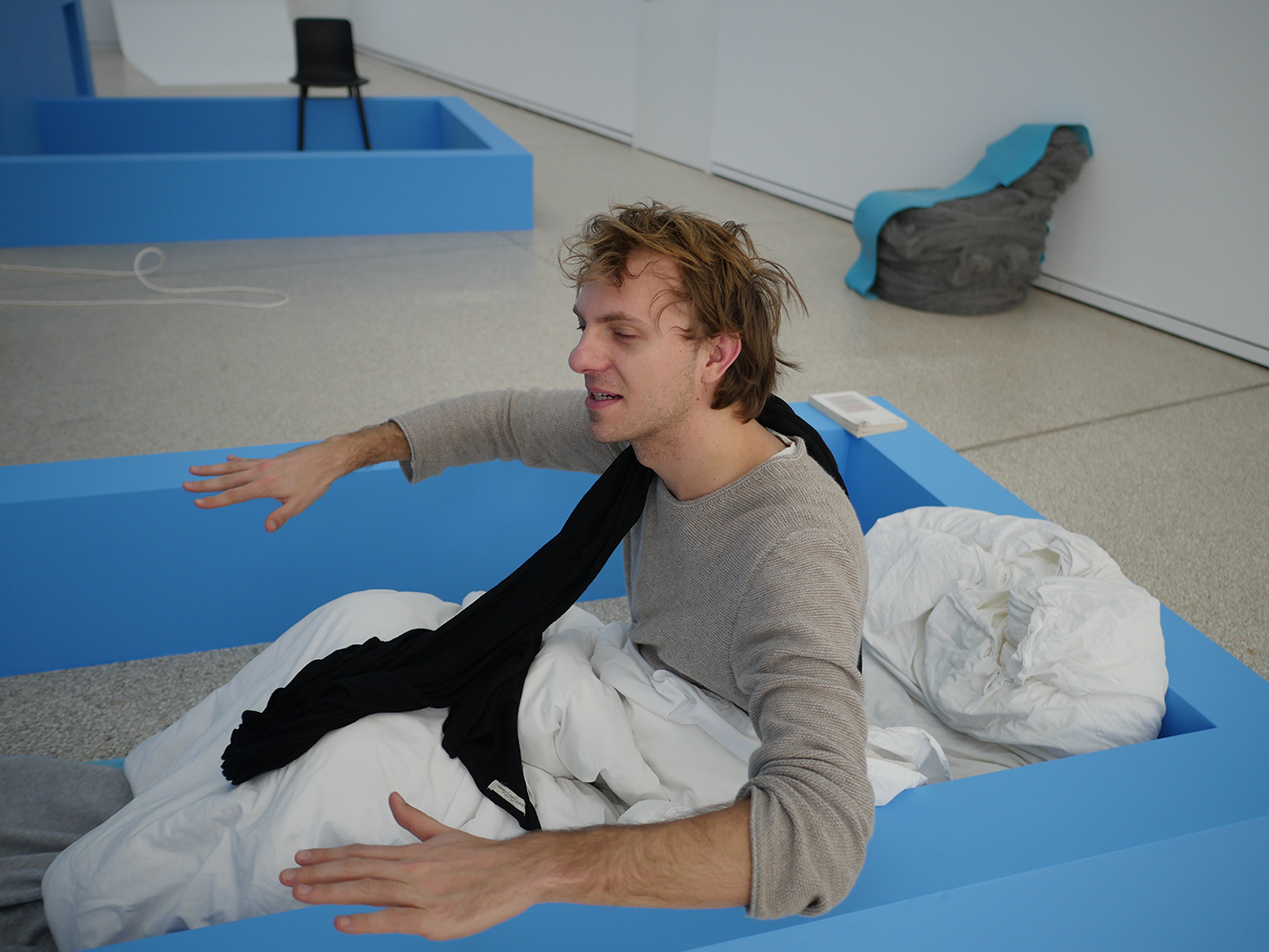
nucleus
The nucleus is the starting point of a new architecture. It contains in the process of becoming what the building will be. This dormant device offers an alternative by replacing the architectural model. The object holds on information in the form of structural and physical properties that can then be plotted as an architecture diagram, and provide the essential structural and semantic features of a building to come. The attributes of the nucleus grow in a subjective process, according to who will foster it, to the environment that will be his. Each nucleus corresponds to a plurality of architectures. In doing so, it dismisses operations related to representation and the "model" - scaling, hierarchy, homothetic transformation, order.
In nucleus for a seam house, the seam that separates the blue and pink faces of the sweater is a starting point to find a form of equivalence in a daily life. This articulation is a concept of space. Two planes join along a line of separation that is not a boundary but an abstract and empty line where two worlds or two modes join. What consequences for a house? The same thing can be done with wires passing through the sleeves. Or rolling the wool around the spool.
nucleus for a house with things (blue)
nucleus for a seam house (pink)




